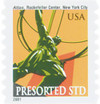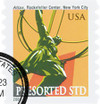
# 3520 - 2001 10c Atlas Statue, coil
10¢ Atlas Statue
“2001” Coil Stamp
City: New York, NY
Printed by: Banknote Corporation of America
Printing Method: Photogravure
Perforations: Serpentine Die Cut 8 ½ vertically
Color: Multicolored
Birth Of Ayn Rand
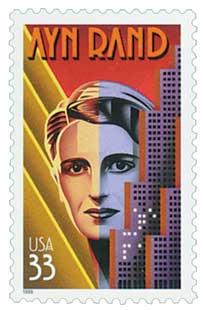
Ayn Rand was born Alisa Zinovyevna Rosenbaum on February 2, 1905, in St. Petersburg, Russian Empire.
Rand was a bright child, who felt unchallenged with school and began writing screenplays when she was eight and novels when she was 10. Her family fled to the Crimean Peninsula during the Russian Civil War and returned after it ended.
Rand was then one of the first women to enroll in Petrograd State University. After graduating in 1924, she studied for a year at the State Technicum for Screen Arts in Leningrad. Then in 1925, Rand received a visa to visit relatives in Chicago. Rand was enamored with American life and wanted to become a screenwriter, so she moved to Hollywood.
On Rand’s second day in Hollywood, movie producer Cecil B. DeMille offered her a ride to the back lot of his studio and gave her a job as an extra in The King of Kings. DeMille later gave Rand a job as a junior screenwriter. Rand married Frank O’Connor in 1929 and became an American citizen two years later. She worked a variety of jobs to support her writing, including the head of the costume department at RKO Studios.
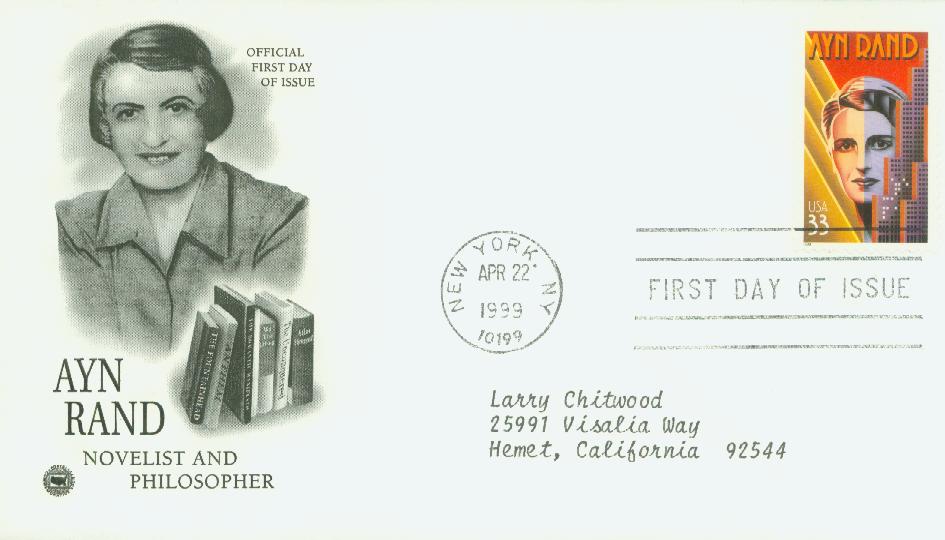
Rand had her first success in 1932 when she sold her screenplay Red Prawn to Universal Studios, though it was never produced. She followed this with Night of January 16th, a courtroom drama in which the play’s jury consisted of 12 audience members. Based on how they voted, the play could have two different endings.
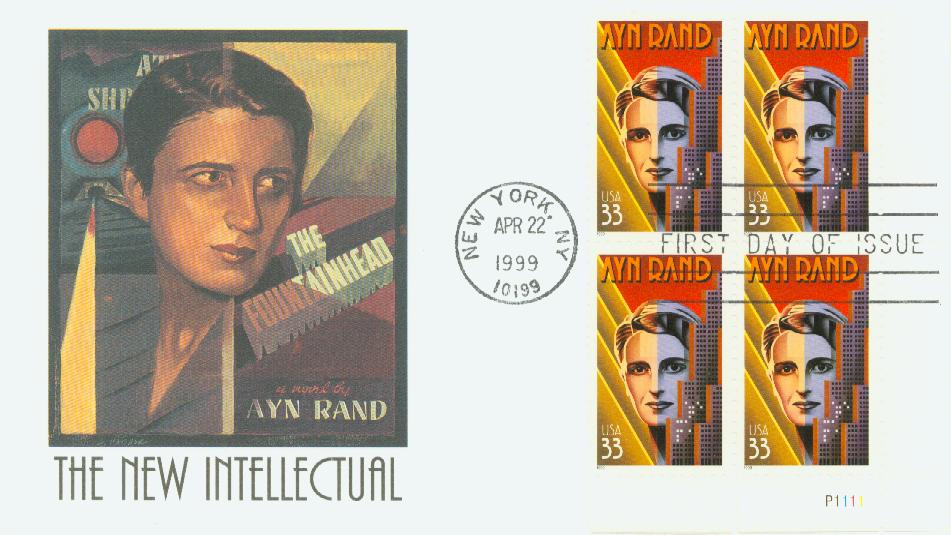
Rand published her first novel, We the Living, in 1936, which was a semi-autobiographical take set in Soviet Russia. Next, she wrote the novella Anthem, about a dystopian future where the word “I” has been forgotten and replaced with “we.”
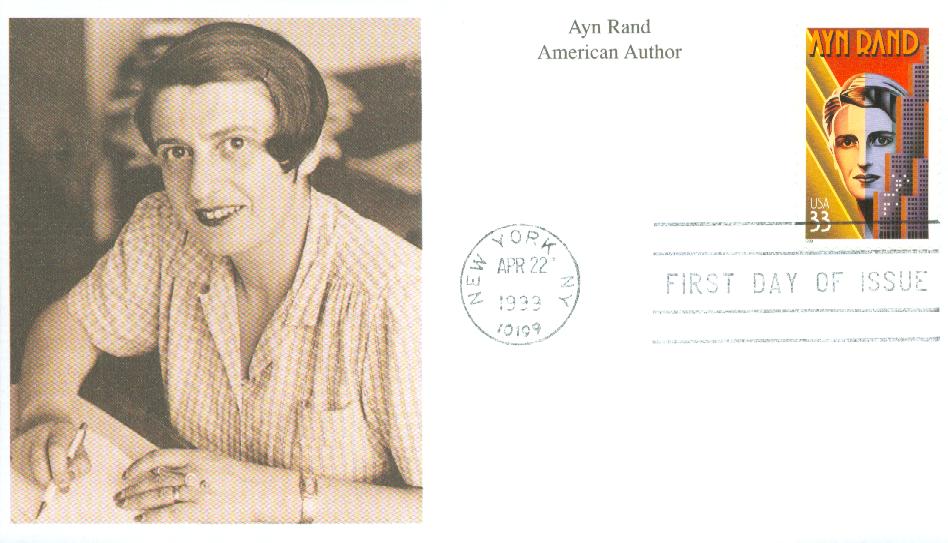
Rand grew very interested in politics in the 1940s, leading to some of her earliest public speaking appearances. In 1943, she published her first major success, The Fountainhead. In that book, an architect struggles against those who would control his genius but manages to succeed by staying true to his principles. It reflected a common theme found in Rand’s writing – that the power of the individual is greater than the power of the group.
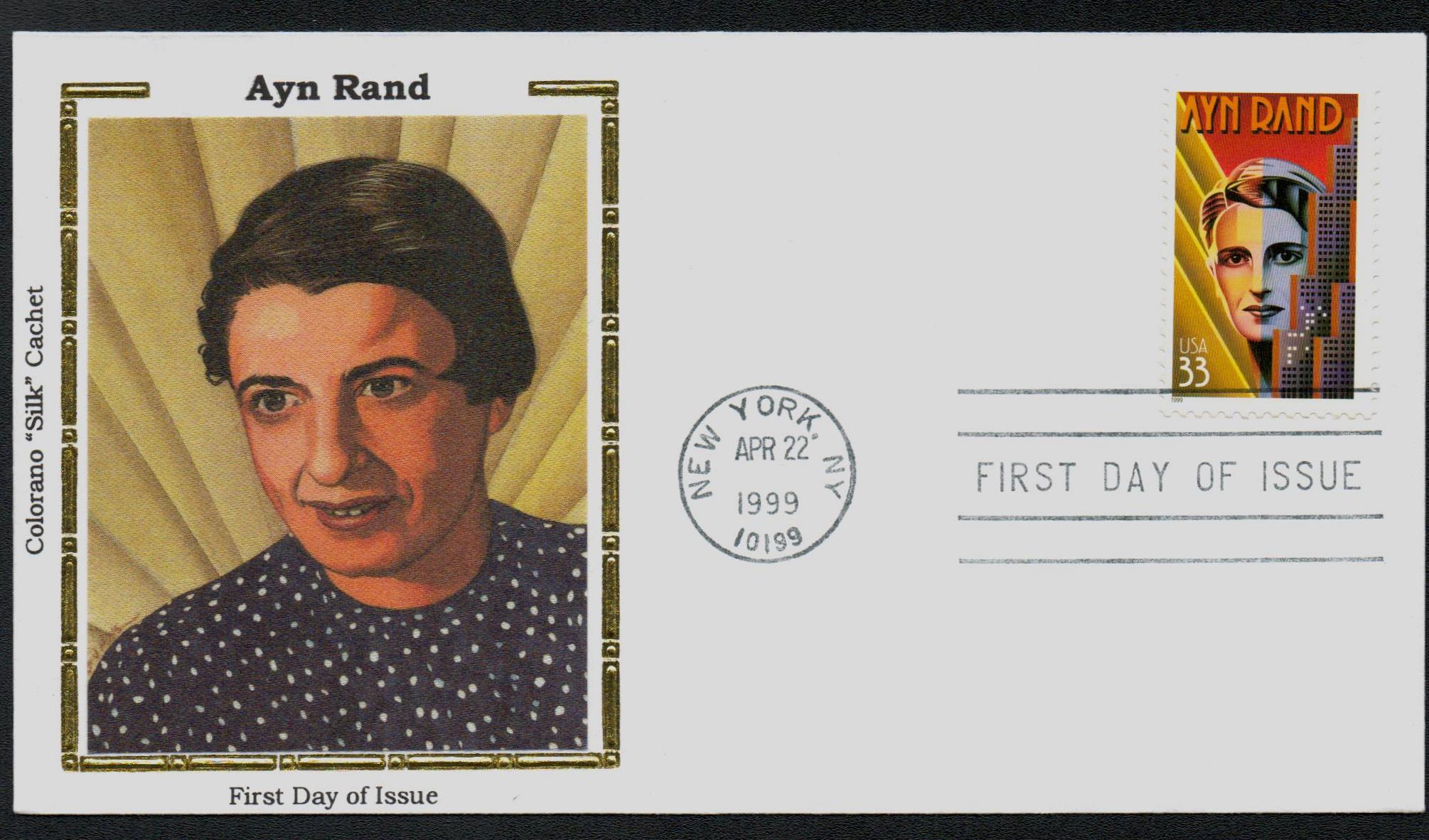
The book was turned down by 12 publishers before one editor threatened to quit his job if his company didn’t publish it. The Fountainhead quickly earned Rand international fame and success. She sold the rights for a film version and wrote the screenplay herself.
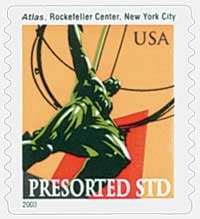
In 1957, Rand published her most famous work, Atlas Shrugged. In that book, a strike by the men of the mind proves society can’t survive without creative genius. Atlas Shrugged explores the concept that the people who do the most to improve society are dragged down by the very people they help. Though the book received several negative reviews, it quickly became an international bestseller.

Atlas Shrugged would be Rand’s final completed novel. After its publication, she focused on philosophy. Rand shared her Objectivist philosophy in talks at numerous American colleges. Rand was also a stamp collector, with a particular interest in issues from the Ryukyu Islands and Iceland. In an article she wrote for the Minkus Stamp Journal in 1971, Rand noted that the 1898 $1 Western Cattle in Storm stamp was among her favorites.
Rand died of heart failure on March 6, 1982, in New York City.
10¢ Atlas Statue
“2001” Coil Stamp
City: New York, NY
Printed by: Banknote Corporation of America
Printing Method: Photogravure
Perforations: Serpentine Die Cut 8 ½ vertically
Color: Multicolored
Birth Of Ayn Rand

Ayn Rand was born Alisa Zinovyevna Rosenbaum on February 2, 1905, in St. Petersburg, Russian Empire.
Rand was a bright child, who felt unchallenged with school and began writing screenplays when she was eight and novels when she was 10. Her family fled to the Crimean Peninsula during the Russian Civil War and returned after it ended.
Rand was then one of the first women to enroll in Petrograd State University. After graduating in 1924, she studied for a year at the State Technicum for Screen Arts in Leningrad. Then in 1925, Rand received a visa to visit relatives in Chicago. Rand was enamored with American life and wanted to become a screenwriter, so she moved to Hollywood.
On Rand’s second day in Hollywood, movie producer Cecil B. DeMille offered her a ride to the back lot of his studio and gave her a job as an extra in The King of Kings. DeMille later gave Rand a job as a junior screenwriter. Rand married Frank O’Connor in 1929 and became an American citizen two years later. She worked a variety of jobs to support her writing, including the head of the costume department at RKO Studios.

Rand had her first success in 1932 when she sold her screenplay Red Prawn to Universal Studios, though it was never produced. She followed this with Night of January 16th, a courtroom drama in which the play’s jury consisted of 12 audience members. Based on how they voted, the play could have two different endings.

Rand published her first novel, We the Living, in 1936, which was a semi-autobiographical take set in Soviet Russia. Next, she wrote the novella Anthem, about a dystopian future where the word “I” has been forgotten and replaced with “we.”

Rand grew very interested in politics in the 1940s, leading to some of her earliest public speaking appearances. In 1943, she published her first major success, The Fountainhead. In that book, an architect struggles against those who would control his genius but manages to succeed by staying true to his principles. It reflected a common theme found in Rand’s writing – that the power of the individual is greater than the power of the group.

The book was turned down by 12 publishers before one editor threatened to quit his job if his company didn’t publish it. The Fountainhead quickly earned Rand international fame and success. She sold the rights for a film version and wrote the screenplay herself.

In 1957, Rand published her most famous work, Atlas Shrugged. In that book, a strike by the men of the mind proves society can’t survive without creative genius. Atlas Shrugged explores the concept that the people who do the most to improve society are dragged down by the very people they help. Though the book received several negative reviews, it quickly became an international bestseller.

Atlas Shrugged would be Rand’s final completed novel. After its publication, she focused on philosophy. Rand shared her Objectivist philosophy in talks at numerous American colleges. Rand was also a stamp collector, with a particular interest in issues from the Ryukyu Islands and Iceland. In an article she wrote for the Minkus Stamp Journal in 1971, Rand noted that the 1898 $1 Western Cattle in Storm stamp was among her favorites.
Rand died of heart failure on March 6, 1982, in New York City.






